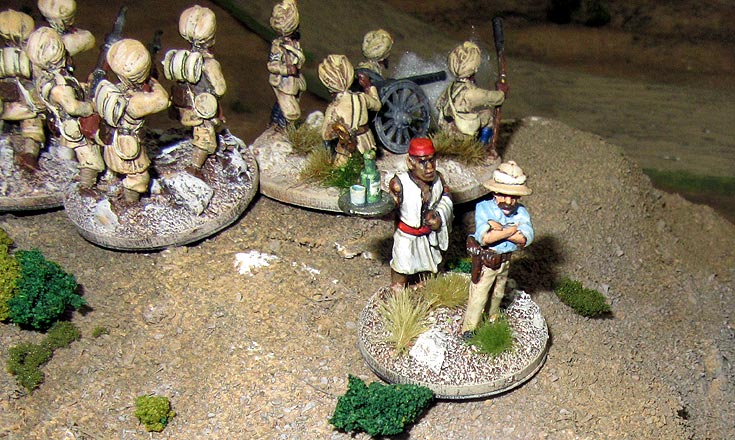
The Marsi Khel Venture, 1897
17th April 2025, 2 Comments
Queen Victoria’s Little Wars, The Men Who Would Be Kings, 28mm
A change of scale this week, and of battleground. We were off to the North-West Frontier, and a punitive expedition against the troublesome Waziris of Marsdi Khel. It’s a village in the Tochi Valley, and in 1897 it was one of several trouble spots on the the Indian frontier with Afghanistan. In our game, the Indian Army is charged with teaching the Waziris a lesson, by knocking down the village mosque, and the dwelling of the local chief. 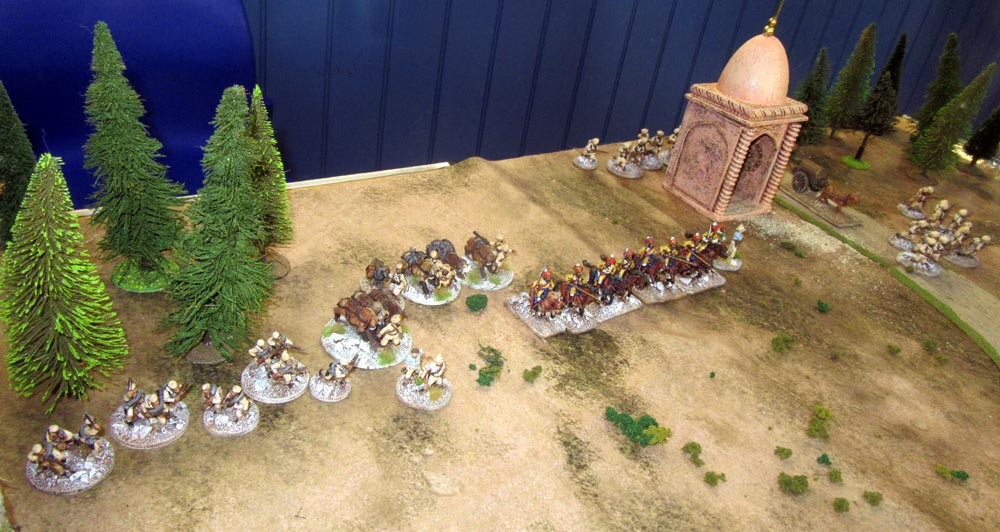 For this one, Sean decided to play for the local side, which left me with the Indian Army. I say Indian for a reason – the only British soldier on the table was the two British officers. That’s my Field Force up above, three 12-figure units of infantry (two Sikh companies and one of Gurkhas) a mountain gun, a machine gun (both Sikh manned) and a squadron of 8 Bengal Lancers. In charge was Colonel Stoutheart and his loyal gin-bearer Gordon.
For this one, Sean decided to play for the local side, which left me with the Indian Army. I say Indian for a reason – the only British soldier on the table was the two British officers. That’s my Field Force up above, three 12-figure units of infantry (two Sikh companies and one of Gurkhas) a mountain gun, a machine gun (both Sikh manned) and a squadron of 8 Bengal Lancers. In charge was Colonel Stoutheart and his loyal gin-bearer Gordon.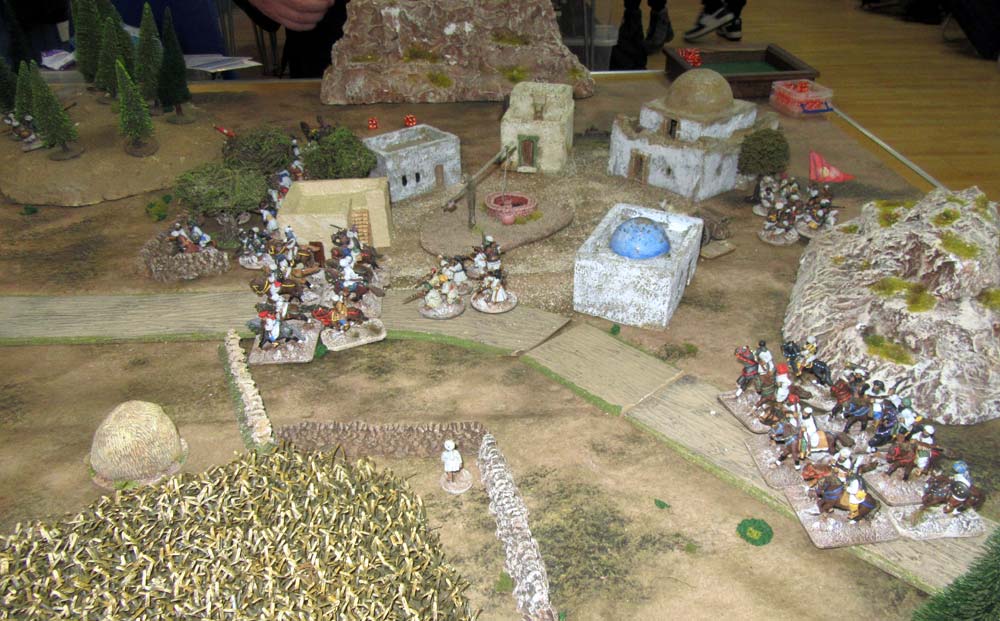 The Waziri chief Abu Daba Duh only had half of his force on the table at the start, grouped around the village. In all though, he had four units of 12 irregular riflemen) half of them modern weapons), two units of 12 tribal cavalry, two units of 16 ‘tribal’ fanatical Ghazi swordsmen and an old Gardner machine gun. In all, both of us had 36 points of toys. We played the game on a 6×4 table, laden with pine-clad hills, rocky outcrops, two temples (one Hindu and the other Muslim), and of course the village of Marsi Khel. The British aim was to destroy the mosque, and raze half the ‘rebel’ village.
The Waziri chief Abu Daba Duh only had half of his force on the table at the start, grouped around the village. In all though, he had four units of 12 irregular riflemen) half of them modern weapons), two units of 12 tribal cavalry, two units of 16 ‘tribal’ fanatical Ghazi swordsmen and an old Gardner machine gun. In all, both of us had 36 points of toys. We played the game on a 6×4 table, laden with pine-clad hills, rocky outcrops, two temples (one Hindu and the other Muslim), and of course the village of Marsi Khel. The British aim was to destroy the mosque, and raze half the ‘rebel’ village. 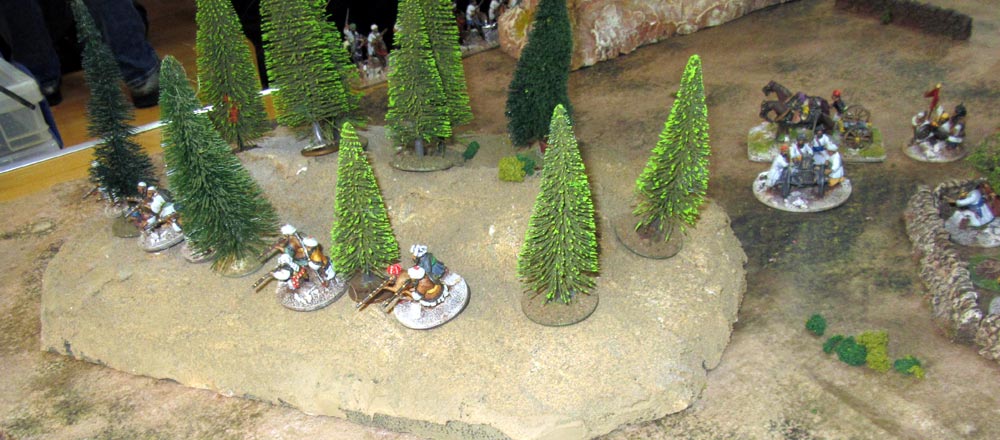 Things got off to a slow start, as the Sikh infantry proved reluctant to ‘activate’. Then they came under fire from Waziri riflemen on the wooded hill in front of them. We run a house rule, in that when a unit in the open becomes ‘Pinned’, it can retreat half a move, or go prone. My Sikh unit lay down, but they still kept taking casualties. Meanwhile the Gurkas (who aren’t slowed by rough terrain) headed for the rocky crag overlooking the village.
Things got off to a slow start, as the Sikh infantry proved reluctant to ‘activate’. Then they came under fire from Waziri riflemen on the wooded hill in front of them. We run a house rule, in that when a unit in the open becomes ‘Pinned’, it can retreat half a move, or go prone. My Sikh unit lay down, but they still kept taking casualties. Meanwhile the Gurkas (who aren’t slowed by rough terrain) headed for the rocky crag overlooking the village. 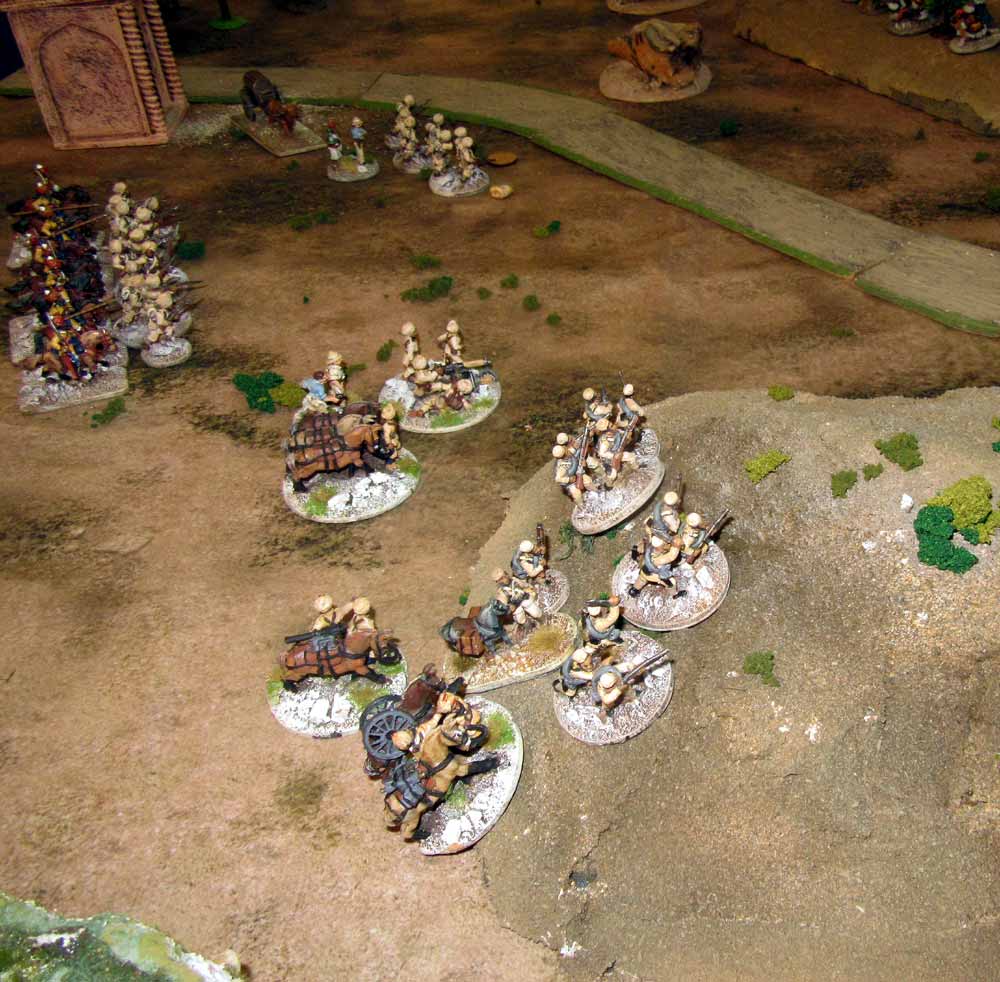 Another house rule is that instead of each unit having a leader (which we find slows the game down), we have two officers per side, and and units check their ‘out of command’ distance from them. In our case Col. Stoutheard joined the Gurkhas as they climbed the crag, while Major Smithers-Jones stuck with the Sikhs. In the end, the Waziri riflemen were driven off by combined rifle and machine gun fire, and the Indian Army advance could continue.
Another house rule is that instead of each unit having a leader (which we find slows the game down), we have two officers per side, and and units check their ‘out of command’ distance from them. In our case Col. Stoutheard joined the Gurkhas as they climbed the crag, while Major Smithers-Jones stuck with the Sikhs. In the end, the Waziri riflemen were driven off by combined rifle and machine gun fire, and the Indian Army advance could continue.  By this stage all of Sean’s Waziris were on the table. Instead of facing the advancing British force head-on, he moved them round the left flank of the British, ready to hit them once they moved closer to the village. By then though, the Gurkhas on top of the crag were helping the Sikh gunners haul up the mountain gun, although they were taking casualties from the Gardner gun, and from Waziri riflemen defending the outskirts of the village.
By this stage all of Sean’s Waziris were on the table. Instead of facing the advancing British force head-on, he moved them round the left flank of the British, ready to hit them once they moved closer to the village. By then though, the Gurkhas on top of the crag were helping the Sikh gunners haul up the mountain gun, although they were taking casualties from the Gardner gun, and from Waziri riflemen defending the outskirts of the village. 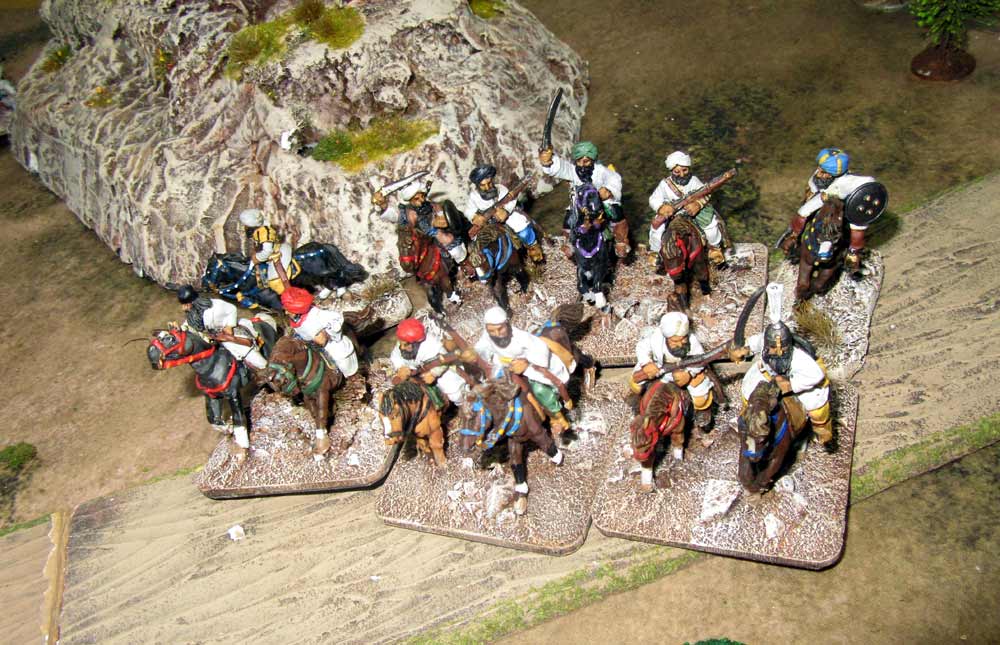 One of the problems Sean had was timing. A lot of his units were failing to ‘activate’, which delayed him getting them into position. He had four good-quality melee troops – the two cavalry and two Ghazi swordsmen units – so he needed to get the timing right to launch them in a coordinated charge. By now though, the Sikh Maxim gun had been brought up, and with help from the Gurkhas it silenced the Waziri Gardner machine gun.
One of the problems Sean had was timing. A lot of his units were failing to ‘activate’, which delayed him getting them into position. He had four good-quality melee troops – the two cavalry and two Ghazi swordsmen units – so he needed to get the timing right to launch them in a coordinated charge. By now though, the Sikh Maxim gun had been brought up, and with help from the Gurkhas it silenced the Waziri Gardner machine gun.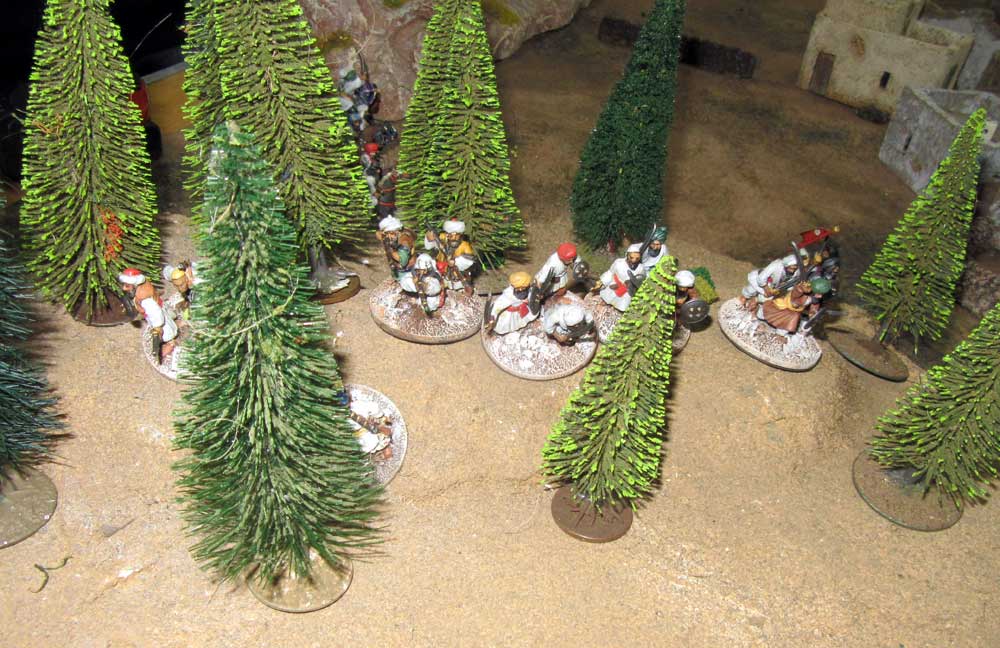 At the same time the Gurkas also finished off the last of the Waziri riflemen defending the village – their modern rifles had the same range as the Gurkha one, which had come as a pleasant surprise. that Sikh machine gun though, was proving its worth. They soon found a fresh target, when a unit of Ghazis broke cover and headed towards the crag. This was bad, but it could have been a lot worse, as the second sword-armed unit (above) refused to budge!
At the same time the Gurkas also finished off the last of the Waziri riflemen defending the village – their modern rifles had the same range as the Gurkha one, which had come as a pleasant surprise. that Sikh machine gun though, was proving its worth. They soon found a fresh target, when a unit of Ghazis broke cover and headed towards the crag. This was bad, but it could have been a lot worse, as the second sword-armed unit (above) refused to budge!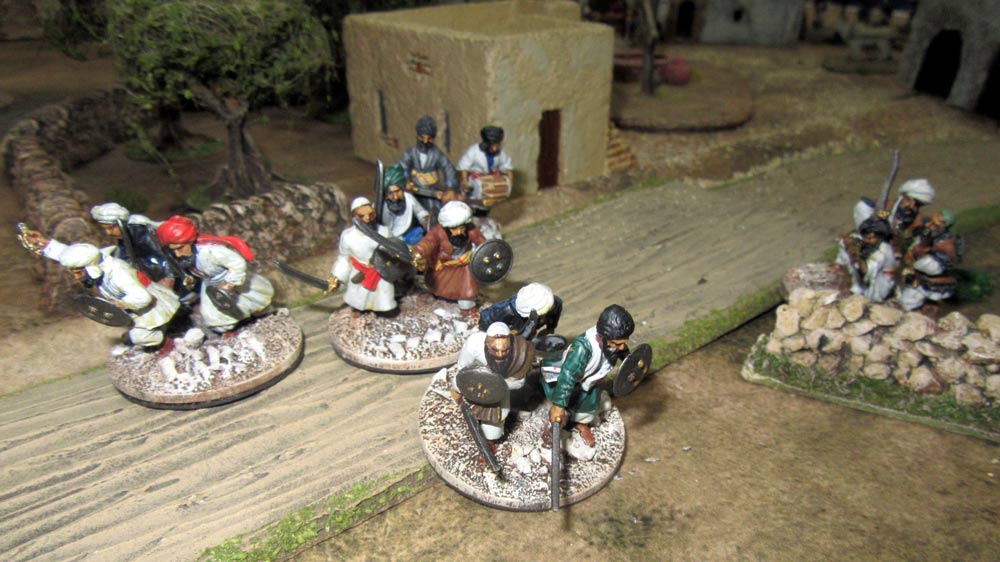 In the end the Ghazis in the open never made it up the crag. Everybody opened up on them – Sikhs, Gurkhas and machine gun, and they were wiped out to a man. It was a real end of Butch Cassidy and the Sundance Kid moment! However, by now one unit of Sikhs had climbed the crag, while the Bengal lancers, the Maxim gun and the badly-battered Gurkha company were gathering in the field at the foot of the crag, sheltering behind its stone walls.
In the end the Ghazis in the open never made it up the crag. Everybody opened up on them – Sikhs, Gurkhas and machine gun, and they were wiped out to a man. It was a real end of Butch Cassidy and the Sundance Kid moment! However, by now one unit of Sikhs had climbed the crag, while the Bengal lancers, the Maxim gun and the badly-battered Gurkha company were gathering in the field at the foot of the crag, sheltering behind its stone walls. 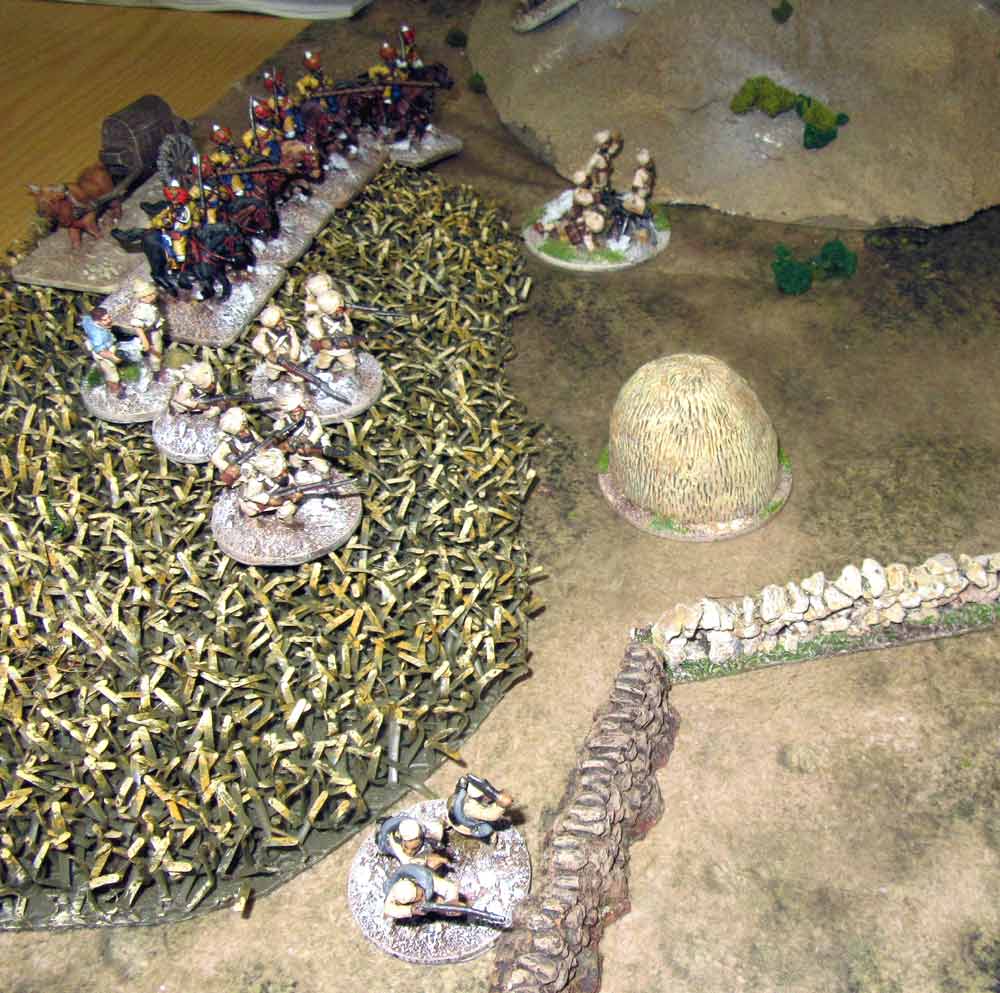 What surprised me is that apart from that one unit of Ghazis, the Waziri counter-attack hadn’t happened. It turned out the cavalry refused to move, as having taken a couple of casualties from the mountain gun, they spent several turns pinned on the far side of the wooded hill. Meanwhile the Sikh mountain gun was firing at the village, and had already demolished the mosque, and was working its way around the village square.
What surprised me is that apart from that one unit of Ghazis, the Waziri counter-attack hadn’t happened. It turned out the cavalry refused to move, as having taken a couple of casualties from the mountain gun, they spent several turns pinned on the far side of the wooded hill. Meanwhile the Sikh mountain gun was firing at the village, and had already demolished the mosque, and was working its way around the village square. 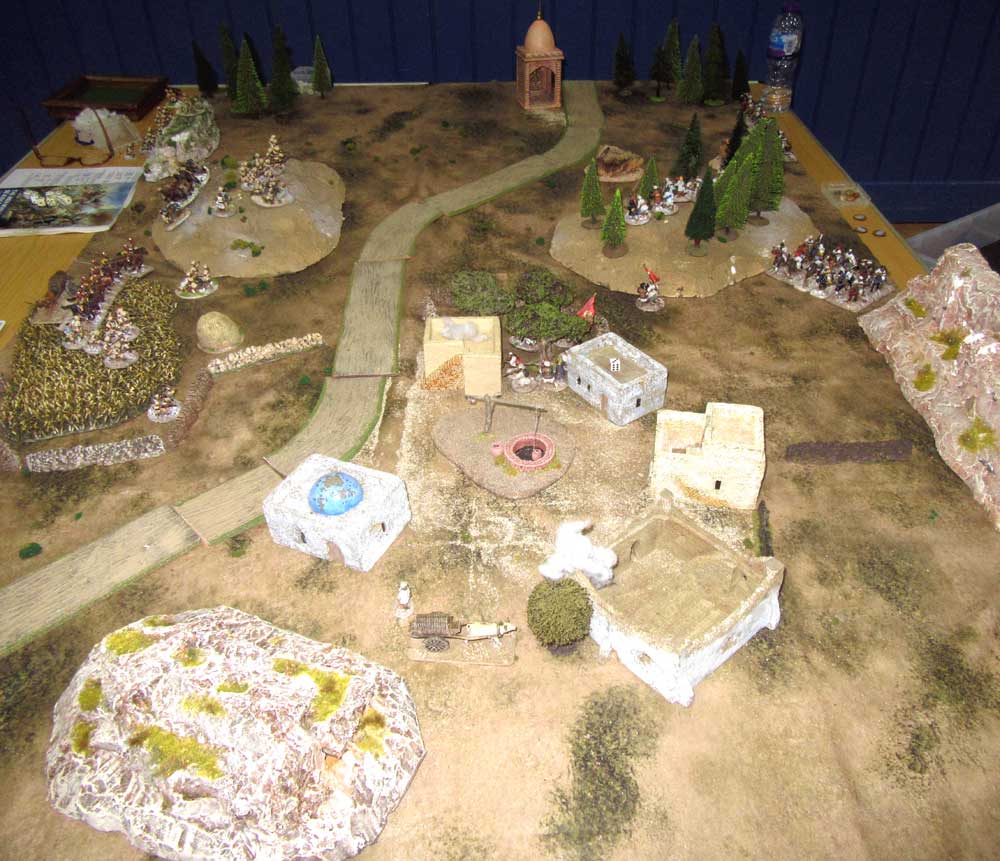 By then though, it was clear that Sean had run out of options. His cavalry couldn’t climb the crag, and so they couldn’t harm half of my force. the rest of the Indian units were safely behind the crag, with nobody between them and the village. So, at that point we decided to end the game, and call it a clear victory for the forces of Queen Victoria’s empire. It was a fun and fast-moving little game though, and the rules gave it a real flavour of the period.
By then though, it was clear that Sean had run out of options. His cavalry couldn’t climb the crag, and so they couldn’t harm half of my force. the rest of the Indian units were safely behind the crag, with nobody between them and the village. So, at that point we decided to end the game, and call it a clear victory for the forces of Queen Victoria’s empire. It was a fun and fast-moving little game though, and the rules gave it a real flavour of the period. 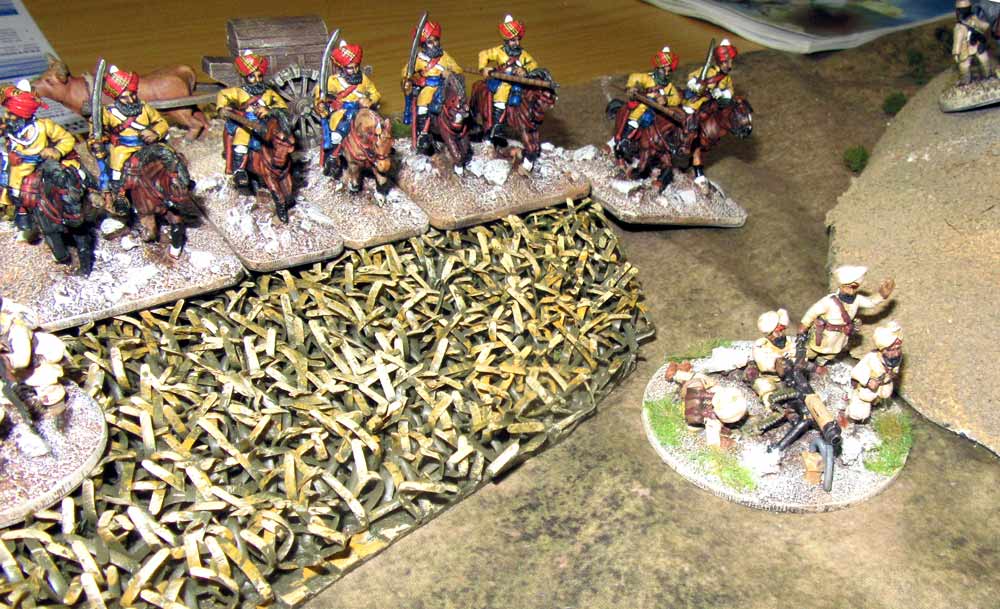

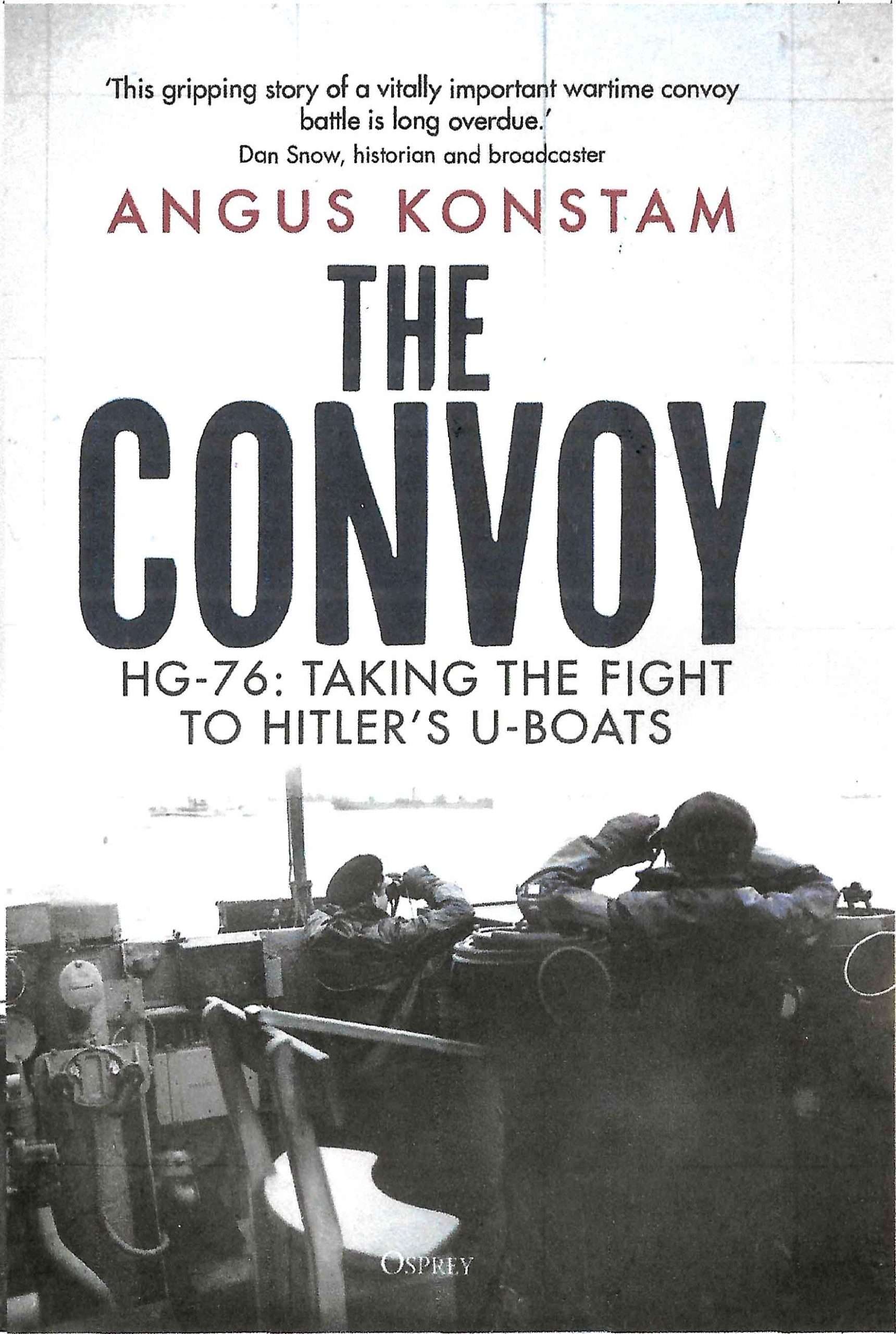
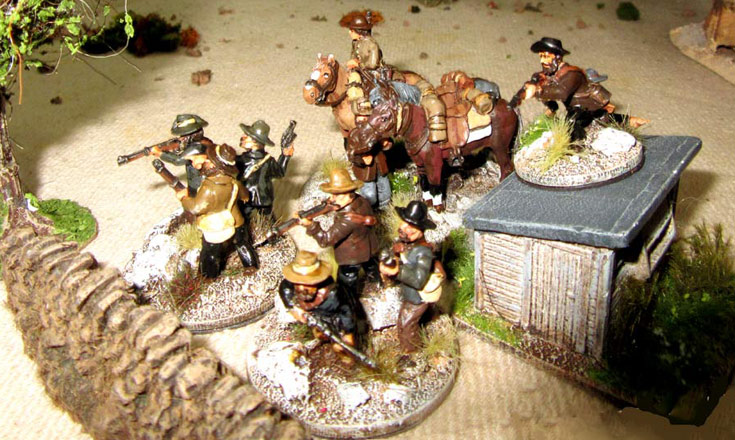

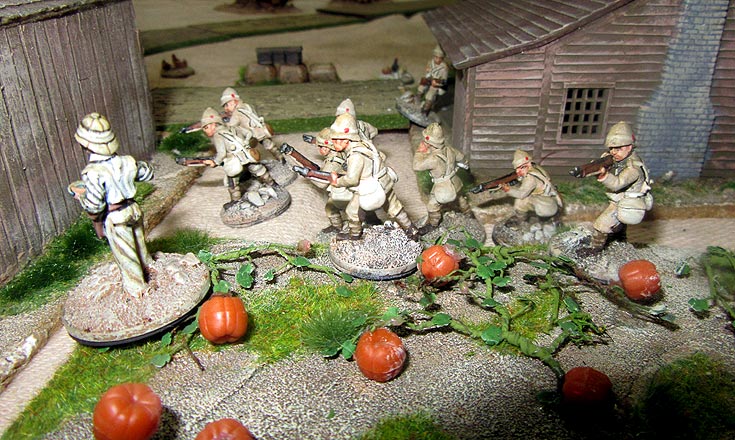
Abu Daba Duh the Waziri Chieftain, presumably known as “Flintstone” to his followers 😂🤣😂🤣
Indeed Martyn. I’m sure its culturally inappropriate, but it keeps me amused…